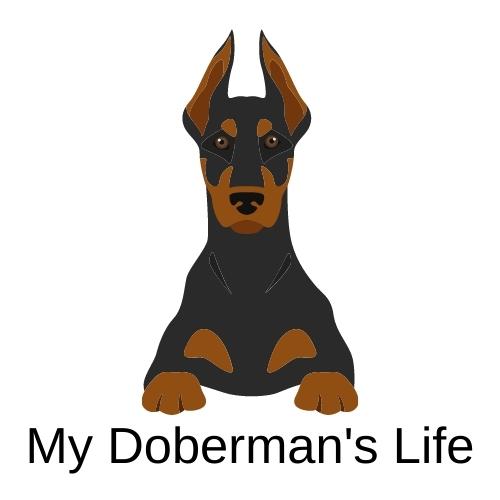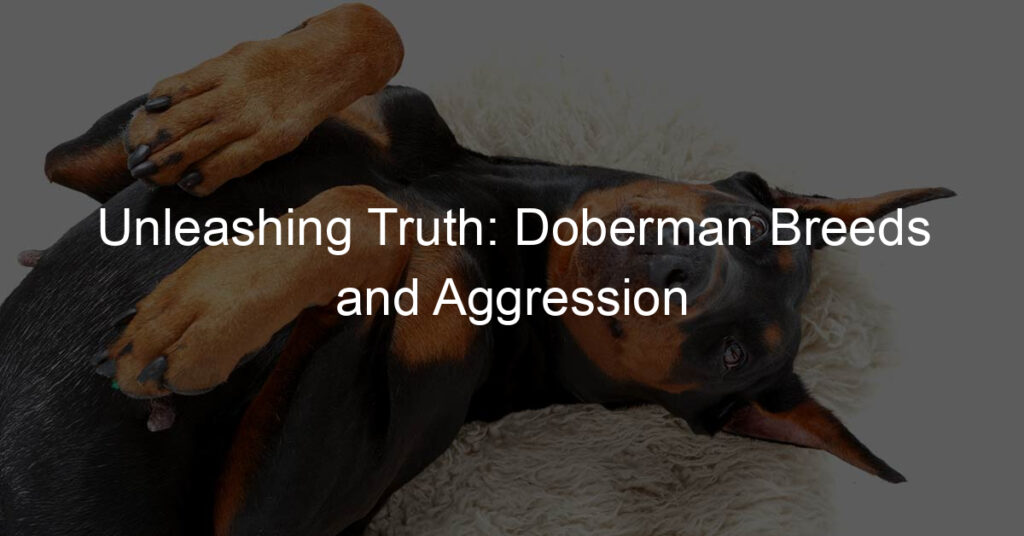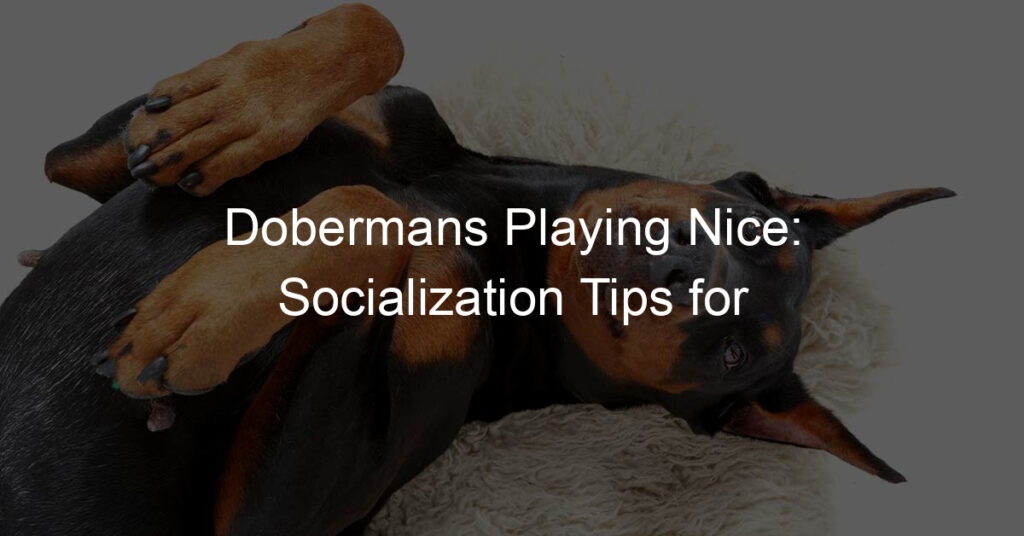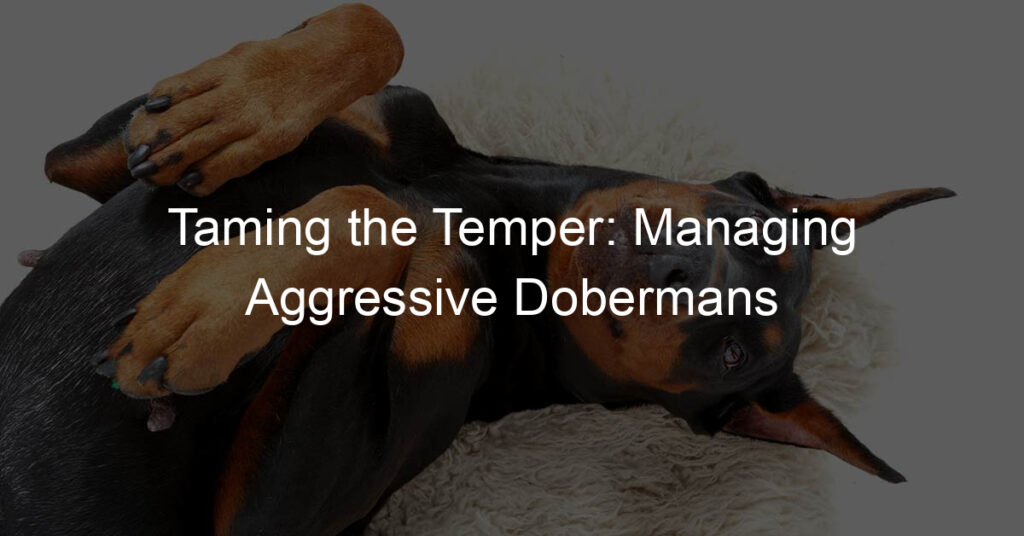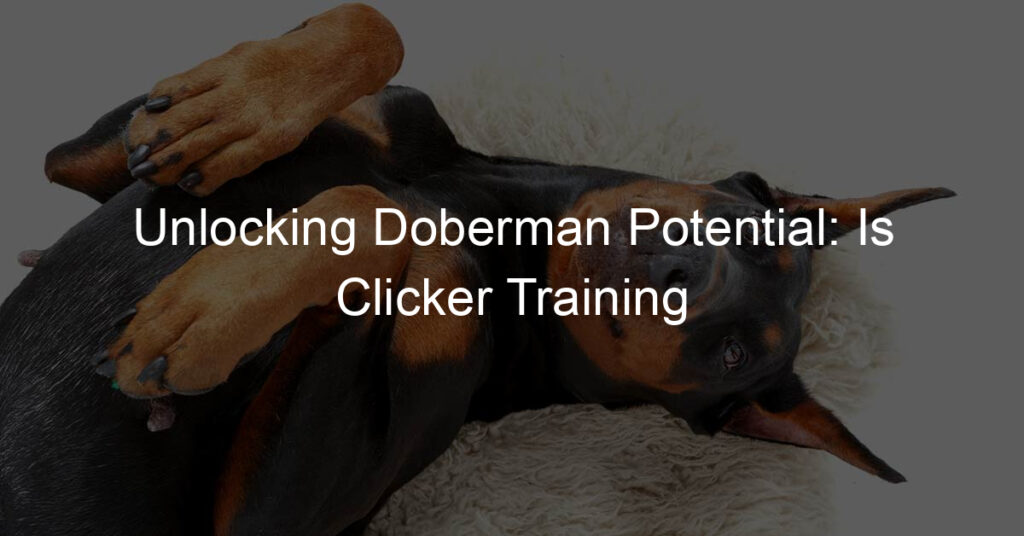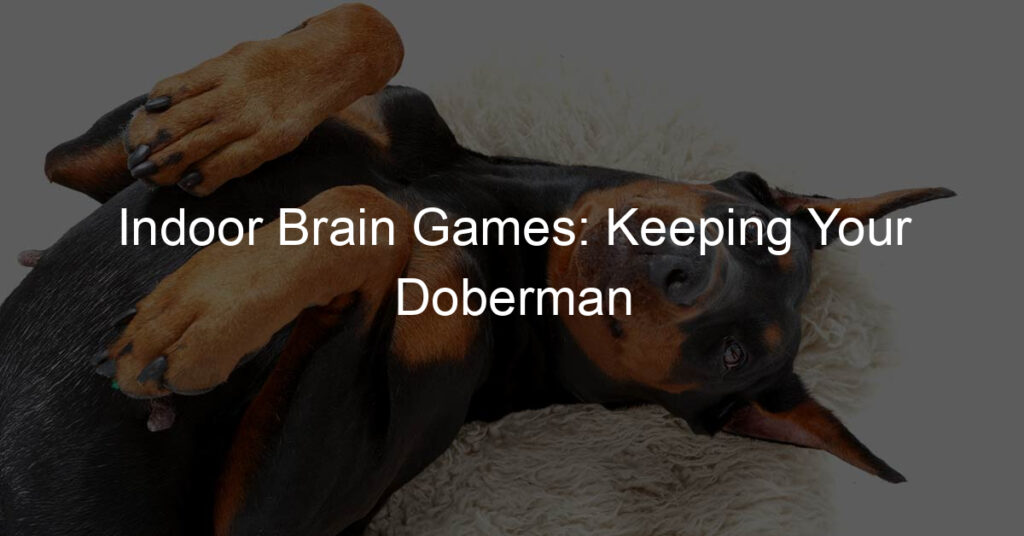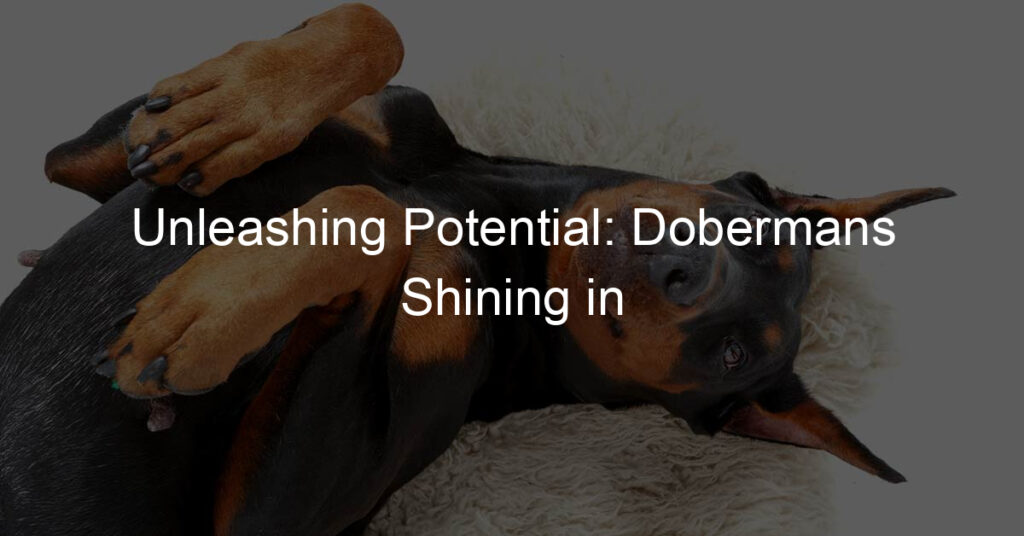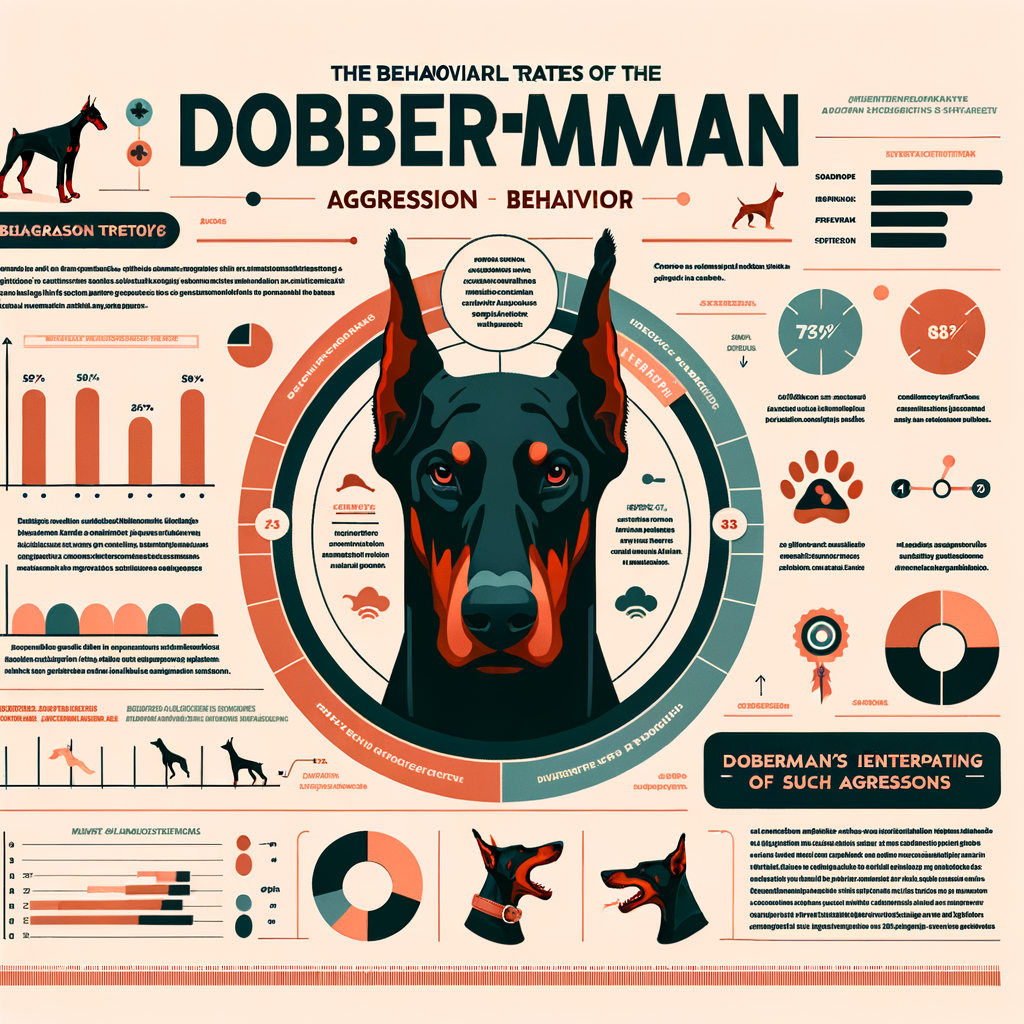
Introduction to Doberman Breeds
Dobermans are a breed of domestic dog that are known for their loyalty, intelligence, and strong protective instincts. They are often used as working dogs in police and military roles, as well as in search and rescue operations. But where did this breed come from, and what are the common characteristics that define them?
- Origins of the Doberman breed
- Common characteristics of Doberman breeds
The Doberman breed was first developed in Germany in the late 19th century by a tax collector named Louis Dobermann. He wanted a medium-sized guard dog to accompany him on his rounds, and so he selectively bred a variety of dogs to create the Doberman. The exact breeds used in the Doberman’s development are not known, but it’s believed that the Rottweiler, German Pinscher, and Greyhound were among them.
Dobermans are known for their sleek coat, athletic build, and noble appearance. They are medium to large-sized dogs, with males typically weighing between 75-100 pounds, and females between 60-90 pounds. Their coat colors can vary, but are most commonly black, red, blue, or fawn, all with rust-colored markings.
Aside from their physical characteristics, Dobermans are also known for their sharp intellect and strong protective instincts. They are fast learners and are known to be loyal, fearless, and alert. However, they also require a lot of exercise and mental stimulation to prevent boredom and destructive behavior.
In the following sections, we will delve deeper into the behavior of Dobermans, specifically focusing on aggression, and provide tips on how to deal with it. Understanding the breed’s characteristics and behavior can help potential owners decide if a Doberman is the right fit for their family.
Understanding Doberman Aggression
Dobermans are often misunderstood due to their reputation for aggression. However, understanding the root causes and signs of this behavior can help us better manage and train these intelligent dogs.
Aggressive Behavior in Dobermans
Aggression in Dobermans, like any other breed, can manifest in various ways. It’s important to recognize these signs early to address them appropriately.
- Common signs of aggression
- Causes of aggressive behavior in Dobermans
Aggressive Dobermans may show signs such as growling, baring teeth, snapping, and biting. They may also exhibit body language like stiffening, staring, or raising their fur. Remember, these signs don’t necessarily mean your Doberman is bad or dangerous. They’re simply ways your dog communicates discomfort, fear, or stress.
Aggression in Dobermans can be caused by various factors. These can include poor socialization, lack of training, fear, or even health issues like pain or neurological disorders. It’s also worth noting that aggression can be a learned behavior, especially if the dog has been rewarded for it in the past.
Understanding these signs and causes is the first step towards managing aggression in Dobermans. In the next section, we’ll delve deeper into specific aggression traits common in this breed.
Doberman Aggression Traits
Understanding the aggression traits in Doberman breeds is crucial to ensure a harmonious relationship between the pet and its owner. Let’s delve deeper into this topic.
- Defining Aggression Traits in Doberman Breeds
- Examples of Aggression Traits in Dobermans
Aggression traits in Dobermans are behaviors that the dog exhibits when it feels threatened or is trying to protect its territory. These traits can include growling, baring teeth, and even biting. It’s important to remember that these behaviors are not necessarily a sign of a ‘bad’ dog, but rather an indication of how the dog is feeling or responding to a particular situation.
Dobermans are known for their loyalty and protective nature, which can sometimes be misconstrued as aggression. However, with proper training and socialization, these traits can be managed effectively.
Here are some examples of aggression traits that Dobermans may exhibit:
| Aggression Trait | Description |
|---|---|
| Growling | This is a warning sign that the dog is uncomfortable or feels threatened. |
| Baring Teeth | A Doberman may bare its teeth as a defensive mechanism when it feels threatened. |
| Biting | In extreme cases, a Doberman may resort to biting if it feels its safety is at risk. |
Remember, these behaviors are not exclusive to Dobermans and can be seen in many dog breeds. However, understanding these traits in Dobermans can help in managing them effectively and ensuring a healthy relationship with your pet.
Doberman Breed Behavior Analysis
Understanding the behavior of the Doberman breed requires a deep dive into their characteristics. These characteristics not only define their physical appearance but also play a significant role in shaping their behavior.
Understanding Doberman Breed Characteristics
Let’s take a closer look at the key characteristics of the Doberman breed and how these traits can influence their behavior:
- Key characteristics of the Doberman breed:
- How these characteristics can influence behavior:
Dobermans are known for their loyalty, intelligence, and strong protective instincts. They are medium to large-sized dogs with a muscular build and a sleek, short coat. Their ears are often cropped to stand erect, and their tails are usually docked short. This breed is highly energetic and requires regular exercise to maintain their physical and mental health.
Their loyalty and protective instincts make them excellent guard dogs. They are often wary of strangers but are generally friendly towards their family and known individuals. Their high intelligence and energy levels mean they require mental stimulation in the form of training and interactive play. Without this, they may become bored and potentially destructive.
Understanding these characteristics can help potential owners provide the right environment for a Doberman. This breed thrives in an environment where they can exercise their minds and bodies regularly. They also need consistent training and socialization from a young age to ensure they grow into well-behaved and balanced adults.
Doberman Behavior Studies
When it comes to understanding the behavior of Dobermans, scientific studies provide valuable insights. Let’s delve into a specific case study and its key takeaways.
- Case study: Aggression in Doberman breeds
- Key takeaways from Doberman aggression studies
One of the most comprehensive studies on Doberman aggression was conducted by a team of animal behaviorists. They observed a group of 100 Dobermans over a period of one year. The study found that while Dobermans can display aggressive behavior, it is usually a response to specific triggers such as fear, territorial disputes, or lack of socialization. It’s important to note that not all Dobermans are aggressive, and many are known for their gentle and loyal nature.
| Trigger | Percentage of Dobermans Showing Aggression |
|---|---|
| Fear | 35% |
| Territorial Disputes | 25% |
| Lack of Socialization | 40% |
The study’s findings highlight the importance of proper socialization and training in reducing aggression in Dobermans. It also underscores the fact that aggression is not inherent in the breed, but rather a response to certain situations. This means that with the right approach, Dobermans can be well-behaved and loving pets.
“Aggression in Dobermans, as in any breed, is not a given. It’s a behavior that can be managed and minimized with proper training and socialization.”
In conclusion, understanding Doberman behavior requires looking beyond stereotypes and misconceptions. By focusing on scientific studies and data, we can gain a more accurate picture of this breed’s behavior and how to manage it effectively.
Dealing with Doberman Aggression
Aggression in Dobermans can be a challenging issue to deal with. However, with the right strategies, it’s possible to manage and even prevent this behavior. Let’s explore some of these methods.
Preventing Aggression in Doberman Breeds
Prevention is always better than cure, and this holds true for dealing with aggression in Dobermans. Here are two key strategies that can help prevent aggressive behavior in your Doberman.
-
Training methods to reduce aggression
Training is an essential part of preventing aggression in Dobermans. Start training your Doberman from a young age, focusing on obedience and discipline. Use positive reinforcement techniques, rewarding good behavior with treats, praise, or playtime. This encourages your Doberman to repeat the good behavior. Remember, consistency is key in training. Regular training sessions, even if they’re short, can make a big difference.
-
The role of socialization in preventing aggression
Socialization plays a crucial role in preventing aggression in Dobermans. Expose your Doberman to different environments, people, and other animals from a young age. This helps them to feel comfortable in various situations and reduces the likelihood of aggressive behavior. Regular walks in the park, playdates with other dogs, and allowing your Doberman to meet new people can significantly enhance their social skills.
By implementing these strategies, you can help your Doberman to become a well-behaved and sociable pet. Remember, every dog is unique and what works for one may not work for another. It’s important to be patient and persistent in your efforts to prevent aggression in your Doberman.
Managing Aggressive Behavior in Dobermans
Aggression in Dobermans is a serious issue that requires immediate attention. If not managed properly, it can lead to dangerous situations. Here are some steps you can take to manage aggressive behavior in your Doberman.
- Steps to take when dealing with an aggressive Doberman
- When to seek professional help
Firstly, it’s crucial to stay calm. Dobermans can sense your fear or anxiety, which may escalate their aggression. Use a firm, but not angry, tone of voice when addressing them. Avoid direct eye contact as this can be perceived as a challenge.
Secondly, try to identify the triggers for your Doberman’s aggression. It could be certain people, other animals, or specific situations. Once you’ve identified these triggers, you can work on desensitizing your dog to them.
Thirdly, positive reinforcement is key. Reward your Doberman for calm behavior. This could be with treats, praise, or extra playtime. This helps them associate good behavior with positive outcomes.
Lastly, consistent training is essential. Regular obedience training sessions can help your Doberman learn to control their impulses and respond to your commands.
If your Doberman’s aggression continues despite your best efforts, it may be time to seek professional help. This could be a certified dog trainer, a behaviorist, or a veterinarian. They can provide you with a tailored plan to manage your Doberman’s aggression.
Remember, aggression in Dobermans is not a sign of a ‘bad’ dog. It’s often a response to fear, stress, or a lack of proper socialization or training. With patience, consistency, and professional guidance, you can help your Doberman become a well-behaved and happy member of your family.
| Steps to Manage Aggression | Description |
|---|---|
| Stay Calm | Dobermans can sense your fear or anxiety, which may escalate their aggression. Use a firm, but not angry, tone of voice. |
| Identify Triggers | Identify the triggers for your Doberman’s aggression and work on desensitizing your dog to them. |
| Positive Reinforcement | Reward your Doberman for calm behavior. This helps them associate good behavior with positive outcomes. |
| Consistent Training | Regular obedience training sessions can help your Doberman learn to control their impulses and respond to your commands. |
| Seek Professional Help | If your Doberman’s aggression continues despite your best efforts, seek help from a certified dog trainer, a behaviorist, or a veterinarian. |
Conclusion: The Truth About Doberman Aggression
As we conclude our discussion on Doberman aggression, it’s essential to debunk some common myths and understand the link between breed and behavior. This will help us appreciate the true nature of Dobermans and the factors that influence their behavior.
- Debunking common myths about Doberman aggression
One of the most common myths about Dobermans is that they are inherently aggressive. This is not entirely true. Like any other breed, Dobermans can exhibit aggressive behavior, but this is often due to poor training, lack of socialization, or mistreatment. It’s not a characteristic ingrained in their DNA.
Another myth is that Dobermans are dangerous to children. In reality, Dobermans are known to be loyal, protective, and gentle with family members, including children. They can be excellent family pets when properly trained and socialized.
- Understanding the link between breed and behavior
While it’s true that certain behaviors can be more prevalent in some breeds than others, it’s important to note that a dog’s behavior is influenced by a variety of factors, including its upbringing, training, and environment. The breed alone doesn’t determine a dog’s behavior.
Dobermans, for instance, were originally bred to be protective guard dogs. This means they may have a natural instinct to protect their family, which can sometimes be mistaken for aggression. However, with proper training and socialization, this protective instinct can be channeled in a positive way.
In conclusion, the truth about Doberman aggression is that it’s often misunderstood. Dobermans are not inherently aggressive or dangerous. They are intelligent, loyal, and protective dogs that can make wonderful pets when given the right training and care.
Remember, every Doberman is an individual, and their behavior will be influenced by many factors, not just their breed. So, let’s appreciate Dobermans for the unique and wonderful dogs they are, and not judge them based on misconceptions and myths.
